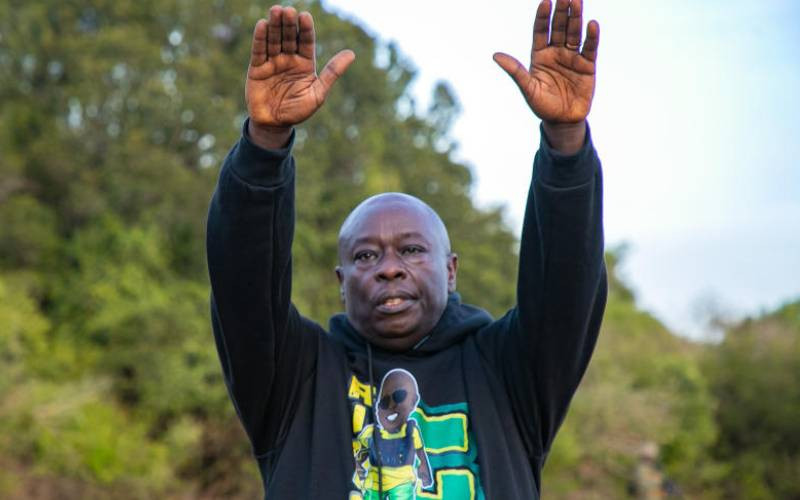
Current key rates published by the Central Bank of Kenya (CBK) indicate that the Central Bank Rate (CBR) is at 11.25 per cent, the inter-bank rate is 11.23 per cent, the central bank discount window rate is 14.25 per cent and the 91-day Treasury bills rate is at 9.955 per cent. Commercial banks are supposed to base their lending rates on the CBR and factor in an assessed weighted risk factor in addition to a premium that covers their cost of funds.
In the latest Monetary Policy Committee (MPC) pronouncement on December 5 2024, the CBK moderately reduced the CBR from 12 per cent to 11.25 per cent, a marginal decrease given the obtaining banking fundamentals, and a more significant reduction would have sufficed. Despite that stance, commercial banks have continued to drag their feet in reviewing lending rates in consonance with the reduced CBR.
The CBK, acting as if it is toothless, has been beseeching commercial banks to respond to the reduced CBR and lower their lending rates. It is worth noting that with the Treasury bill rates plummeting and the 91-day Treasury bill rate being at 9.955 per cent, it infers that the government is borrowing from the public at a lower rate than the CBR which is the base rate that commercial banks predicate their lending rates to the general public, small and medium enterprises and corporates.
Since Treasury bills and bonds are the surest and safest investment avenue, the plummeting rates affect requisite yields and leave investors with few choices for assured short-term investments, with interest on savings and fixed deposits in commercial banks being notably low. This is a segment that interest capping had corrected but with its repeal, commercial banks reverted to paying the least possible interest.
However, what is baffling is that commercial banks are under the ambit of CBK regulation, and therefore once the MPC pronounces itself on the policy rate, it should be a matter of course that commercial banks correspondingly adjust their lending rates promptly, because it is not a favour that the banks are conferring to customers, but a fundamental shift in banking fundamentals to which they should acquiesce.
In an ideal economic environment, adjustment in lending rates in alignment with the policy rate should happen like the clockwork, and not like the situation we are experiencing of a long hiatus before the adjustments happen. The CBK Governor should not be requesting commercial banks to align their rates to the CBR.
When the interest rate capping was in motion, commercial banks always responded to the adjustments in the central bank rate promptly because the lending rates were constricted and had a bearing on their interest income, which was the biggest contributor to the billions posted by commercial banks in profitability. Would it be time for re-legislation to revert to interest capping?
There is also a misalignment in the manner in which CBK, as a lender of last resort, goes about in bailing out commercial banks which experience challenges in settling their daily commitments at the Clearing House – where the exchange of cheques and credits take place on working days.
Currently, when commercial banks seek CBK’s accommodation, they are bailed out at a punitive rate of 14.25 per cent. It is instructive that not long ago, CBK complained that there were commercial banks which abused the CBK discount window facility by using the funds to invest in government paper. Wouldn’t it help to proactively manage such corporate malfeasance than the knee-jerk hiking of the attendant rate?
Similarly, one wonders where the surveillance and supervision role of CBK starts and ends, and if such transactions could happen and be successfully completed without the outright connivance of parties in the affected commercial banks and the CBK. It leaves a lot to be desired.
Dr Mukhongo has a doctorate in Project Management
 The Standard Group Plc is a
multi-media organization with investments in media platforms spanning newspaper
print operations, television, radio broadcasting, digital and online services. The
Standard Group is recognized as a leading multi-media house in Kenya with a key
influence in matters of national and international interest.
The Standard Group Plc is a
multi-media organization with investments in media platforms spanning newspaper
print operations, television, radio broadcasting, digital and online services. The
Standard Group is recognized as a leading multi-media house in Kenya with a key
influence in matters of national and international interest.
 The Standard Group Plc is a
multi-media organization with investments in media platforms spanning newspaper
print operations, television, radio broadcasting, digital and online services. The
Standard Group is recognized as a leading multi-media house in Kenya with a key
influence in matters of national and international interest.
The Standard Group Plc is a
multi-media organization with investments in media platforms spanning newspaper
print operations, television, radio broadcasting, digital and online services. The
Standard Group is recognized as a leading multi-media house in Kenya with a key
influence in matters of national and international interest.










